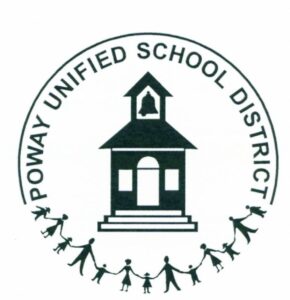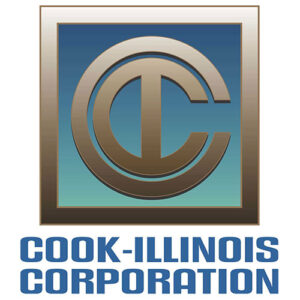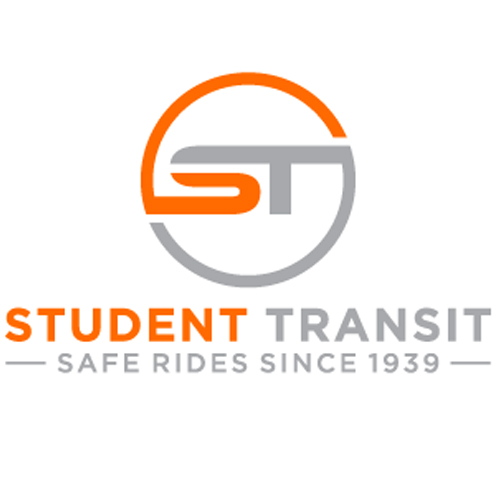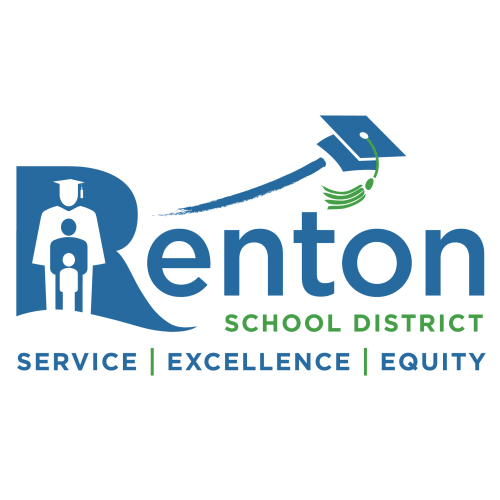Unlocking Tomorrow’s School Transportation Today: The Driver Scheduling Software Revolution
Many districts are adopting a new dispatching and payroll technology that also has demonstrated an ability to improve school bus efficiency and safety.
Many, if not most, larger school districts and private school bus fleets rely on GPS Fleet Tracking today, as well as routing software, to improve their operations and deliver greater student safety.
These technologie are well established and most transportation leaders appreciate the direct and indirect benefits of using these technologies to improve operations and drive greater awareness and safety.
But many districts remain unaware of a new emerging technology designed to connect the two previously independent platforms into a 360 degree view of operations to empower dispatchers, payroll technicians and fleet directors to capture even better operational efficiencies and uncover new ways to increase safety.
Trusted by the Finest Names in School Bus Transportation
Driver Scheduling Software Solutions
Bytecurve360, developed and supported by a team with more than 100 years of combined student transportation experience, is growing in popularity among fleets which leverage both routing and GPS Fleet tracking thanks to its ability to improve driver management, better control costs associated with payroll and deliver improved services to schools and families.
Not designed to replace either system, Bytecurve360 aims to connect dots that were previously constrained by technology silos into a more comprehensive perspective of student transportation management.
Featuring a driver communication app, a payroll tool that can be leveraged in the garage via a touchscreen monitor or on- the-go via the driver app DriveOn as well as dispatch features designed by a team with years of experience managing complex and dynamic school bus fleets, Bytecurve360 delivers a transformative operational experience.
“It’s helped us provide a new level of command and control that allows us to be ahead of issues instead of responding to them,” said Marty Klukas, General Manager, Student Transit. “It’s become our command and control and helps us know what right looks like.”
Driver scheduling software: Unlocking new dispatching opportunities
A driver scheduling software, also known as a transportation management system (TMS) or school bus routing software, is a specialized computer program designed to optimize and streamline the planning and scheduling of school bus routes and driver assignments within a school district.
Its primary purpose is to efficiently allocate resources and manage transportation logistics, ensuring safe and reliable transportation for students while minimizing costs and maximizing operational efficiency.
First of all, the software can analyze various factors like student locations, bus stops, road conditions, and traffic patterns to create optimized routes. This helps in reducing travel times and fuel costs.
It can also assign drivers to specific routes and vehicles based on their qualifications, availability, and preferences.
This ensures that drivers are utilized effectively and fairly. But paying drivers fairly and accurately, and not without significant effort, can remain a challenge even with a highly functioning routing system.
Many scheduling software systems also provide real-time updates and communication tools, allowing administrators, drivers, and parents to track buses, receive alerts, and communicate with each other.
The software helps ensure that routes comply with safety regulations and local laws too. It can also track maintenance schedules for buses, ensuring they are in good working condition.
By optimizing routes, reducing idle time, and minimizing fuel consumption, driver scheduling software can also lead to significant cost savings for school districts.
Efficient routes and better scheduling also help buses run on time, reducing waiting times for students and improving overall service quality.
These systems also generate data and reports that can be used to assess and improve transportation operations over time. Administrators can make data-driven decisions to enhance efficiency and safety.
In case of emergencies or unexpected events, the software can also quickly adapt routes and provide alternative plans to ensure student safety.
But many of these functions aren’t fully realized without layering the data from a GPS routing system on top of the routing information.
Bytecurve360 is the only software solution available today that merges the data from both systems to deliver a new dispatching and payroll solution that focuses on solving several of the most pressing challenges facing almost every student transportation fleet, including:
- Real-time late or missing drivers awareness
- The ability to make real-time changes to route, runs and tasks
- The ability to seamlessly move between pay rates for the same employee
Many driver scheduling systems also offer parent and community portals or apps that allow stakeholders to:
- track bus locations
- receive alerts
- and communicate with the school district
fostering transparency and trust.
Lastly optimizing routes and reducing unnecessary mileage, driver scheduling software can contribute to a reduction in greenhouse gas emissions and overall environmental impact.
Driver scheduling software has a significant positive impact on the day-to-day operations of school districts.
It enhances transportation efficiency, safety, and cost-effectiveness, while also improving communication with parents and the community. Implementing such software can lead to smoother operations, reduced costs, and increased satisfaction among students, parents, and staff.
What are the key features of a driver scheduling software?
Driver scheduling software leverages a range of notable technologies to efficiently carry out its functions.
These technologies enable the software to optimize routes, manage driver assignments, and streamline day-to-day operations within school districts.
- Geographic Information Systems (GIS) technology is fundamental for mapping and spatial analysis.
Driver scheduling software uses GIS to create digital maps, plot student addresses, bus stops, and road networks, enabling route optimization and real-time tracking.
- Algorithms, such as heuristic algorithms, genetic algorithms, and linear programming, are employed to optimize bus routes, taking into account factors like distance, time, capacity, and student safety.
- Global Positioning System (GPS) technology is integrated with buses to provide real-time location data.
Telematics systems collect information on vehicle speed, fuel consumption, and maintenance needs. This data is used for route tracking and monitoring vehicle health.
- Driver scheduling software often relies on communication protocols, like cellular networks or Wi-Fi, to transmit real-time information between buses, dispatchers, and parents. This enables tracking, alerts, and two-way communication.
- The software employs data analytics tools to process and analyze transportation data. This data is then presented in the form of reports and visualizations, which help school districts make informed decisions and identify areas for improvement.
- Many driver scheduling systems offer mobile apps and web portals for administrators, drivers, parents, and other stakeholders. These platforms provide access to real-time information, route updates, alerts, and communication features.
- Machine learning algorithms can continuously improve route optimization by learning from historical data and adapting to changing conditions. AI-powered predictive maintenance can also be used to proactively schedule bus maintenance.
- Cloud-based solutions offer scalability and accessibility. They allow school districts to store and access data securely while ensuring that updates and improvements to the software are readily available.
- The software may include emergency alert features that can send notifications to parents and staff in the event of accidents, delays, or other critical incidents.
Key features of driver scheduling software include:
- Route optimization -Creating efficient bus routes that consider factors like distance, capacity, and student needs.
- Driver assignment – Assigning drivers to routes based on qualifications, availability, and preferences.
- Real-time tracking – Monitoring bus locations in real time and providing updates to parents and administrators.
- Reporting and analytics – Generating reports and visualizations to analyze performance and make data-driven decisions.
- Maintenance scheduling – Tracking bus maintenance schedules to ensure safe and reliable operations.
- Emergency planning – Providing tools to adapt routes in emergencies and communicate with stakeholders.
- Cost analysis – Calculating costs associated with transportation operations and identifying cost-saving opportunities.
These technologies and features collectively enable driver scheduling software to optimize school transportation operations, enhance safety, and improve communication between stakeholders.
Comparing scheduling software manual scheduling and alternatives
Driver scheduling software offers several advantages over manual scheduling operations and alternative solutions when it comes to managing school transportation logistics.
In the first place, driver scheduling software is highly efficient in optimizing routes, reducing travel time, and minimizing fuel costs.
Manual scheduling, for its part, is prone to human errors and less likely to create the most efficient routes. While alternative solutions, such as paper-based scheduling or basic spreadsheet tools, are typically less efficient than dedicated software.
To wit, many school transportation officials who just years ago welcome the proliferation of free spreadsheets to organize their routes and employees today lament the mountains of data they must track in these same spreadsheets.
Driver scheduling software also provides accurate route planning and driver assignments based on data analysis and algorithms.
Manual scheduling, alternatively is more susceptible to errors, such as incorrect addresses or overlooked constraints. Finally, the accuracy of other alternatives solutions varies but is generally lower compared to software.
Driver scheduling software can also adapt to changing conditions, road closures, and emergencies in real time. Manual scheduling, on the other hand, requires more time and effort to adjust routes and assignments when unexpected events occur.
Similar to manual scheduling, alternative solutions may lack real-time adaptability.
Driver scheduling software can optimize routes and driver assignments, leading to cost savings in
- fuel
- maintenance
- Labor
Manual Scheduling is more likely to result in higher operational costs due to inefficiencies. While alternative solutions tend to be less cost-effective compared to dedicated software.
Driver scheduling software often includes real-time communication tools for parents, drivers, and administrators.
Manual scheduling,for its part, lacks integrated communication features, requiring separate communication channels. While alternative solutions are often similar to manual scheduling, communication features are usually limited.
Driver scheduling software also provides data analytics and reporting tools to analyze performance and make data-driven decisions. Manual scheduling lacks data analysis capabilities, making it challenging to identify areas for improvement.
While alternative solutions offer limited or negligible data analysis features. Driver scheduling software is also easily scalable to accommodate growing transportation needs.
Manual scheduling becomes more challenging and time-consuming to manage as the scale of transportation operations increases. While alternative solutions may lack scalability features.
Driver scheduling software also helps ensure routes comply with safety regulations and allows for proactive maintenance scheduling. Manual scheduling may overlook safety and compliance issues, leading to potential risks. Alternative solutions often have similar limitations regarding safety and compliance.
In summary, driver scheduling software offers significant advantages in terms of
- efficiency
- accuracy
- adaptability
- cost efficiency
- communication
when compared to manual scheduling operations and alternative solutions.
It leverages technology, algorithms, and data analysis to optimize transportation logistics, enhance safety, and improve the overall quality of service for school districts and their communities.
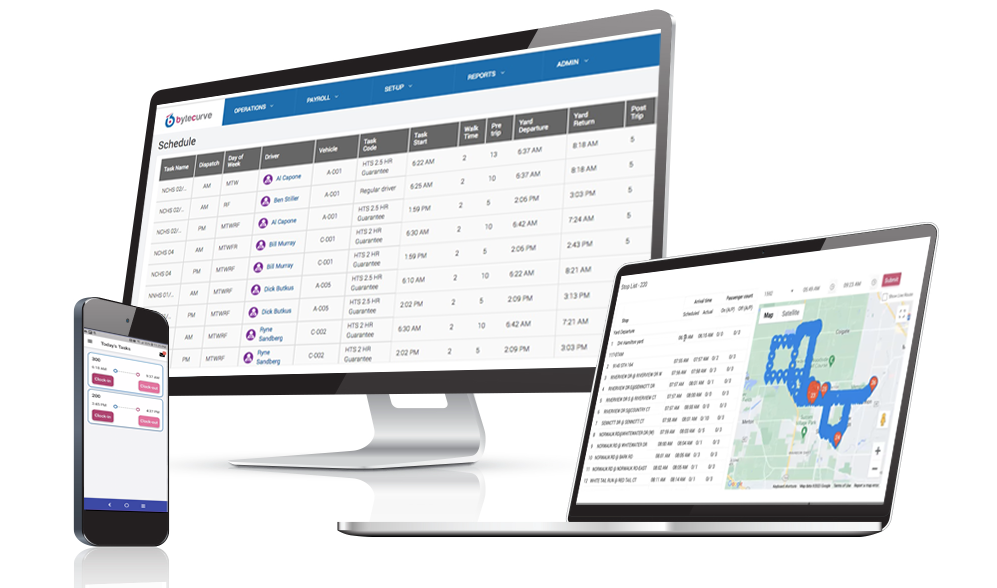
What are the major pain points in school districts that driver scheduling software effectively addresses?
Driver scheduling software effectively addresses several major pain points in school districts related to transportation operations. These pain points often involve inefficiencies, safety concerns, communication challenges, and cost management.
Manual routing can lead to suboptimal bus routes, longer travel times, and increased fuel consumption. Driver scheduling software optimizes routes to reduce inefficiencies.
Ensuring student safety during transportation is paramount.. Driver scheduling software helps create safe routes, monitors driver behavior, and enables quick adaptation to emergencies.
Coordinating with drivers, parents, and administrators can also be challenging without dedicated communication tools. The software provides real-time communication features to enhance information exchange.
Controlling transportation costs is also a constant concern for school districts. The software optimizes routes, reduces fuel consumption, and enhances maintenance scheduling to minimize expenses.
Coping with changing conditions, road closures, or new student enrollments can be difficult without a flexible system. The driver scheduling software can quickly adapt routes to accommodate changes.
Parents often have questions about bus routes, delays, and safety. The software offers parent portals or apps to provide real-time information and address parental concerns.
Meeting regulatory requirements for school transportation is crucial. Driver scheduling software helps ensure routes and operations comply with safety and legal regulations.
Managing a fleet of buses and drivers requires efficient resource allocation too. The software optimizes resource allocation to minimize idle time and maximize utilization.
Handling emergencies, such as accidents or severe weather conditions, can be challenging. The software assists in emergency planning and provides tools for quick response.
Analyzing transportation data manually is also time-consuming and may not yield actionable insights. Driver scheduling software offers data analysis tools to identify trends and areas for improvement.
As student populations change, transportation needs evolve too. The software can scale to accommodate growth and changing requirements efficiently.
Lastly, manual scheduling and administrative tasks can overload staff members.


